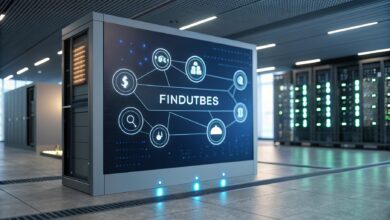Pappedeckel: The Future of Sustainable Packaging

Pappedeckel: The Future of Sustainable Packaging introduces an eco-friendly revolution in packaging made from biodegradable paperboard. Pappedeckel offers a strong, lightweight, and recyclable solution for reducing plastic waste. This innovation combines durability with environmental responsibility for global use. Ideal for coffee cups, containers, and lids, it supports a circular economy approach. Businesses and consumers alike can benefit from its versatility and affordability. Discover how Pappedeckel is shaping the next generation of green packaging.
Stay tuned with us we will talk about Pappedeckel: The Future of Sustainable Packaging.
What Is Pappedeckel?
“Pappedeckel” is a German term meaning “cardboard lid” or “paperboard cover.” It refers to a sustainable packaging product commonly used as an alternative to plastic lids and covers. In today’s eco-conscious world, Pappedeckel represents the shift toward greener, renewable materials that protect the environment while maintaining product safety and convenience. Whether for beverages, food storage, or consumer goods, Pappedeckel offers a viable solution for replacing single-use plastics.
The Rise of Sustainable Packaging in the Modern World
Sustainability is no longer a trend—it’s a necessity. With environmental regulations tightening across the globe, the demand for biodegradable and recyclable packaging solutions like Pappedeckel has skyrocketed. The United States, in particular, is witnessing a surge in businesses adopting paper-based alternatives. This movement aligns with consumer expectations for eco-friendly options that reduce landfill impact and carbon emissions. Pappedeckel’s emergence showcases how innovation meets responsibility in the packaging industry.
Key Features of Pappedeckel
Pappedeckel stands out because of its unique design and sustainable attributes. Some key features include:
- Eco-Friendly Composition: Made primarily from renewable cellulose fibers.
- Durable and Moisture-Resistant: Engineered to handle heat, liquids, and transport stress.
- Lightweight: Reduces transportation costs and overall carbon footprint.
- Fully Recyclable and Compostable: Aligns with zero-waste goals.
- Customizable: Can be printed, embossed, or coated to suit branding needs.
These features make Pappedeckel ideal for businesses that care about both functionality and environmental impact.
How Pappedeckel Benefits Businesses and Consumers
For businesses, Pappedeckel represents an opportunity to align operations with environmental values while maintaining cost efficiency. The benefits include:
- Enhanced brand reputation through eco-conscious initiatives.
- Compliance with green packaging laws and consumer expectations.
- Lower waste management and disposal costs.
Consumers benefit by supporting a cleaner planet and enjoying packaging that’s safe, biodegradable, and free from harmful microplastics. In short, it’s a win-win for both sides.
Pappedeckel vs. Plastic: A Comparative Look
| Feature | Pappedeckel | Plastic Lids |
| Material | Biodegradable paperboard | Non-biodegradable petroleum plastic |
| Environmental Impact | Minimal, compostable | High, contributes to pollution |
| Durability | Strong and heat-resistant | May warp or melt under heat |
| Recycling Options | Easily recyclable | Limited recycling capabilities |
| Consumer Appeal | Eco-conscious and modern | Often criticized for pollution |
This comparison highlights why industries worldwide are transitioning to Pappedeckel as a practical, sustainable alternative.
Industrial Applications of Pappedeckel
Food and Beverage Industry
Pappedeckel is widely used for hot and cold drinks, soup containers, and takeaway food packaging. Coffee shops, juice bars, and restaurants appreciate its lightweight and secure sealing properties.
Consumer Goods and Retail
Retailers use Pappedeckel for product packaging, storage containers, and branded eco-boxes. It offers visual appeal without compromising sustainability.
Logistics and E-Commerce
Pappedeckel is also emerging as a preferred material in e-commerce packaging, offering durable protection for items while remaining fully recyclable.
Manufacturing Process and Material Innovation
Modern production of Pappedeckel involves advanced paper engineering techniques.
- Raw Material Preparation: Cellulose fibers are derived from responsibly sourced wood pulp.
- Forming and Pressing: The fibers are pressed into shape using heat and pressure, ensuring rigidity and water resistance.
- Coating: Optional eco-friendly coatings enhance moisture protection without introducing plastics.
- Customization: Printing and embossing add branding and design elements.
Continuous innovations in bio-based coatings and fiber blends are making Pappedeckel even more durable and versatile for commercial use.
Environmental Impact and Sustainability Benefits
Using Pappedeckel reduces environmental degradation in several key ways:
- Decreases reliance on fossil fuels used in plastic manufacturing.
- Reduces waste accumulation in landfills and oceans.
- Supports circular economy practices through composting and recycling.
- Encourages responsible forestry and material sourcing.
By adopting Pappedeckel, industries contribute directly to a more sustainable global supply chain and a greener planet.
Future Trends in Pappedeckel and Green Packaging
As technology evolves, Pappedeckel’s potential expands. Future innovations include:
- Waterproof Natural Coatings: Derived from plant-based waxes.
- Smart Packaging: Integration of QR codes for recycling guidance.
- Enhanced Durability: Combining multiple eco layers for food-safe applications.
- Wider Market Adoption: Especially in U.S. fast-food, retail, and e-commerce sectors.
These trends signal that Pappedeckel will continue leading the green packaging movement worldwide.
Conclusion
Pappedeckel represents the future of sustainable packaging by combining functionality, durability, and environmental consciousness. Its eco-friendly materials reduce plastic waste, while offering strong, lightweight, and versatile options for businesses and consumers. By supporting circular economy principles, Pappedeckel empowers industries to align with global sustainability goals. The rise of biodegradable paperboard lids reflects growing awareness and responsibility across sectors. Companies adopting Pappedeckel benefit from improved brand reputation and reduced ecological footprint. Its innovative design and customizable nature make it ideal for modern commerce. As green technologies advance, Pappedeckel will evolve even further to meet packaging challenges. The journey from plastic to paperboard marks a crucial turning point in manufacturing history. Ultimately, Pappedeckel proves that sustainable progress can be both practical and profitable.
FAQs
What is Pappedeckel?
Pappedeckel is a biodegradable paperboard lid or cover designed as an eco-friendly alternative to plastic packaging.
Why is Pappedeckel considered sustainable?
It’s made from renewable cellulose fibers, making it recyclable, compostable, and low-impact on the environment.
Can Pappedeckel handle liquids and heat?
Yes, it’s engineered to resist moisture and heat, making it suitable for beverages and hot food containers.
Where is Pappedeckel commonly used?
It’s widely used in food, beverage, and e-commerce packaging due to its lightweight and durable properties.
Is Pappedeckel available in the USA?
Yes, many eco-conscious U.S. businesses are adopting Pappedeckel as part of their sustainable packaging strategies.



